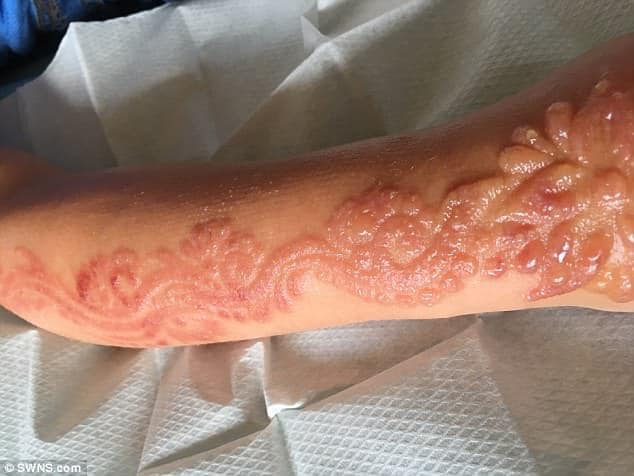


House Call Doctor is warning families travelling overseas these school holidays to be aware of the dangers of temporary tattoos, which can cause painful skin reactions and scarring, particularly in children.
“While many parents think getting a temporary henna tattoo is harmless holiday fun, it can lead to permanent scarring,” Dr Ryan Harvey said.
What is black henna?
Knowing the differencing between natural henna and black henna tattoos is crucial. One can leave a brown design and the other can cause chemical burns, blisters and scarring.
Black henna tattoos contain a dye used in hair colourings, which contain paraphenylenediamine (PPD). PPD is an extremely toxic chemical for the skin and body, and it can cause chemical burns and lead to allergic reactions.
What are the dangers of black henna tattoos?
Black henna tattoos have been known to cause anaphylaxis and serious skin damage with permanent scars in some cases.
Dr Ryan Harvey from House Call Doctor urges families to think twice about letting their children get a temporary henna tattoo. Recent photos posted online show the extreme reaction in some people, and plenty of Australians have commented on a post on House Call Doctor’s Facebook page, saying they and their children suffered similar skin damage from black henna tattoos they had done in popular holidays destinations like Bali.
“Unlike here in Australia, there may not be any regulation of what goes into the dye, and children in particular, can have extreme reactions that can cause blistering, open sores and a chemical burn,” Dr Harvey said.
“It looks like the patient has suffered an extreme allergic reaction to something in the dye and it’s caused a chemical burn to the skin”.
These are some of the signs to look out for:
- Discomfort
- Burning or tingling
- Painful stinging
- Swelling
- Skin redness
- Blisters.
How to treat the condition
Dr Harvey said if you suffer a similar reaction to a black henna tattoo, you should immediately run the area under cool water to treat the chemical burn.
“If it is an allergic reaction, the patient may need antihistamine, a topical steroid cream or a steroid tablet to treat the burn,” Dr Harvey said.
“It depends on the extent of the burn but if it covers a large percentage of the body, particularly in children, they may need to be observed in hospital, so they don’t go into shock.
“Keep up your fluid intake and stay hydrated because all the fluid in your body will rush to the burn site.”
How do I know if it is real henna?
Natural henna never contains PPD, it is entirely made of plant-based ingredients, including eucalyptus. The clear difference is real henna is never black, but rather an orange colour with a red or brown tint to it.
Any very dark temporary tattoo should be treated with caution. Black henna tattoos are readily available in many countries; therefore, it is important to be extra vigilant as many tattoo places will not inform tourists that black henna is being used.
Ask to check the list of ingredients, and avoid getting any henna that contains PPD.
If there is no list of ingredients, do not use the product.




